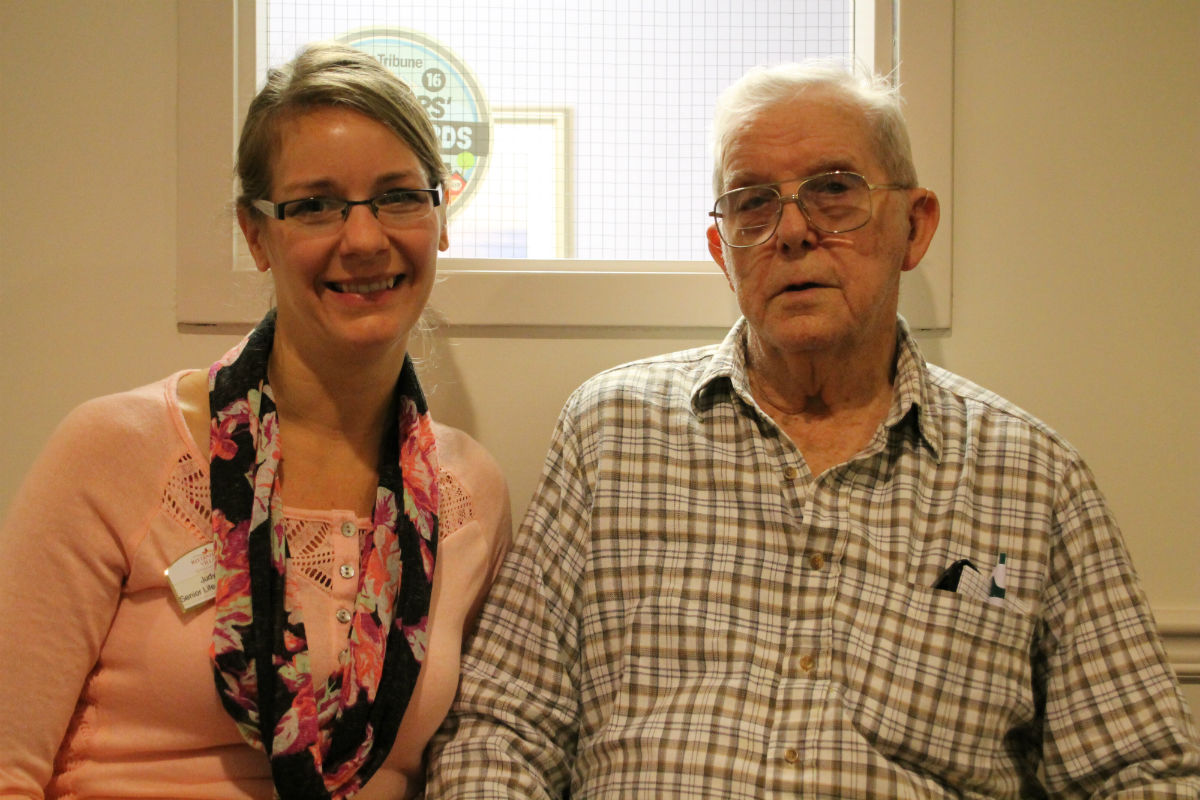Veteran’s Day is approaching and Portage Rittenhouse is making sure their veteran residents are honored and remembered. For the upcoming holiday, Rittenhouse has several events planned throughout the day and will also feature a display table filled with residents' military memorabilia.
“On a guess, I’d say we have 20-25 residents that are veterans here. It's important each one is represented on that day,” said Portage Rittenhouse’s Marketing Director, Judy Kukelka. “We of course honor them on Veteran’s Day and on other important holidays that come up as well, like Flag Day and the Fourth of July. It’s an important part of the year for them and for us. Our activity department does a great job making sure we honor those days with our veterans.”
The residents' families are also welcomed to the activities during the holiday. Residential veterans have the opportunity to connect with others who do not live on site, but may also be veterans themselves.
“They all love to tell their stories. Its pretty unique when some of the families come in and share their stories about how some of their family members were veterans. The families kinda get involved and that's what we want.” said Kukelka.
Rittenhouse takes pride in making sure each veteran feels welcomed, and invites opportunities for veterans to tell their stories:
R.O. Johnson
R.O. Johnson served in the army during WWII, from 1943-1946. He worked army headquarters for telephone and radio operations. His position required him to work rear echelon to ensure communications were up and running at all times. Johnson was shipped out to France in September 1944 and was apart of every major conflict in the European theater until V-E Day.
“Even though we were in the rear. St. Lo France was still smoldering from all the bombs when we went through it.” Johnson added.
After the war had ended Johnson was slated for the South Pacific. The boat departed from France and the course charted was through the Panama Canal. They were told the trip would take over 30 days. And a great deal of world events happened over those 30 days.
“We got word on the ship that they dropped the first atomic bomb and it destroyed a city in Japan. But we still went on. Then they dropped the second atomic bomb, and everyone was confused. We were asking each other, ‘why the hell were going to the South Pacific if they were bombing the hell out of them now?’ We all knew they were going to give up.”
Two days through the canal, the Johnson’s company was given word that they would be turning north and that the war was over. Johnson’s ship was the first to ship to return home at the end of the war.
“We were all told not to rush over to the starboard side when we made the turn into port, because they were afraid we would capsize the ship. But we all couldn’t help it when we saw the Statue Of Liberty.”
The memory of seeing the statue still has a deeply emotional effect on Johnson and always will.
Ed Fietz
“Well, the best thing I got in the army was a wife.” chuckled Ed Fietz
Ed spent three years and three months in the army, from 1942 to 1945. He learned typing in high school, which helped him land several good jobs in the army. He spent most of his time stateside, but was shipped to the West Indies and spent some time there. The majority of his military career was spent at a camp in Arkansas, where his father was stationed during WW1. It was also here where he met his wife.
“She was working at the camp I was in. She worked the service center at the camp and served sodas,” said Fietz. “I saw her at a dance and she was pretty girl and I was bashful about going up to her. But I went back to talk to her the next time I saw her at the soda shop. I got up enough nerve to ask her to go on a date and she said, ‘yes.’ From then on we hit it off pretty good and wound up with seven children,” Fietz laughs.
Mildridge Lipscomb III
Rittenhouse not only honors its residents who are veterans, but it’s employees as well
Mildridge Lipscomb III works as a chef at Rittenhouse. From 1979 - 1983, he served as a mess specialist in the Navy. In his time with the navy he served during the Iranian Crisis and was able to see Hong Kong, Thailand, Somalia Africa, and the Philippines.
“When I stated, I didn’t know how to cook. A first class petty officer took me under his wing and that's how I learned to cook,” said Lipscomb. “Sometimes we had real rough seas and lost food. If you weren’t able to pin it down it was gone. We learned to improvise with these situations. We would tie pots and pans down with towels. Some stuff we couldn’t do anything about. A Lot of the eggs we served ended up being scrambled. We had to cook in some real rough waters. But I never got sick. I’m proud of that.”
After the service, Lipscomb went onto the Art Institute and earned his Cullonary Art’s degree.
“I wouldn’t trade my experiences in the Navy for anything. Heck, I got my career out of it.” said Lipscomb.
These are only 3 of countless stories that fill the Portage Rittenhouse. Rittenhouse makes it their duty that each of these veterans are remembered and honored. They encourage others and visitors to take the time to listen to their stories as well.

